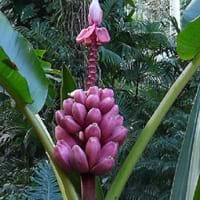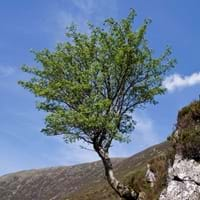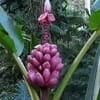Life Span
Perennial
Perennial
Type
Flowering Plants, Fruits, Herbs
Tree
Origin
Central America, West Indies
Asia, Europe, Northern Africa
Types
Not Available
Sorbus aucuparia fenenkiana, Sorbus aucuparia glabrata, Sorbus aucuparia praemorsa
Number of Varieties
Not Available
Habitat
Open areas, Open Plains
Temperate Regions
USDA Hardiness Zone
8-11
3-7
AHS Heat Zone
Not Available
7-1
Sunset Zone
Not Available
A1, A2, A3, 1a, 1b, 2a, 2b, 3a, 3b, 4, 5, 6, 7, 8, 9, 10, 14, 15, 16, 17
Habit
Upright/Erect
Oval or Rounded
Flower Color
Red, Reddish Plum, Rose
White
Flower Color Modifier
Bicolor
Bicolor
Fruit Color
Red, Rose, Tan
Orange, Yellow
Leaf Color in Spring
Sea Green, Gray Green
Green
Leaf Color in Summer
Sea Green, Gray Green
Green
Leaf Color in Fall
Sea Green, Gray Green
Dark Green
Leaf Color in Winter
Sea Green, Gray Green
Dark Green
Leaf Shape
Cone shaped
Pinnate
Plant Season
Fall, Spring, Summer
Spring, Fall
Sunlight
Full Sun, Partial shade
Full Sun, Partial Sun
Type of Soil
Clay, Loamy
Clay, Loam, Sand
The pH of Soil
Neutral, Slightly Acidic
Acidic, Neutral
Soil Drainage
Well drained
Average
Bloom Time
Early Fall, Early Summer, Late Spring, Late Summer, Summer
Late Spring
Tolerances
Not Available
Not Available
Where to Plant?
Ground
Ground
How to Plant?
From bulbs, From Rhizomes, Seedlings
Budding, Grafting, Stem Cutting
Plant Maintenance
Medium
Medium
Watering Requirements
Allow soil to be completely dry in between waterings, It cannot sustain wet-feet, Requires regular watering, Water every two or three days during warmer months
Do Not over Water, Water in the early morning hours
In Summer
Lots of watering
Lots of watering
In Spring
Moderate
Moderate
In Winter
Average Water
Average Water
Soil pH
Neutral, Slightly Acidic
Acidic, Neutral
Soil Type
Clay, Loamy
Clay, Loam, Sand
Soil Drainage Capacity
Well drained
Average
Sun Exposure
Full Sun, Partial shade
Full Sun, Partial Sun
Pruning
Prune after harvesting, Remove dead or diseased plant parts
Remove dead or diseased plant parts, Trim each shoot back to the first set of leaves
Fertilizers
All-Purpose Liquid Fertilizer
All-Purpose Liquid Fertilizer, Doesn't require fertilization when grown in rich soil
Pests and Diseases
Anthracnose, Banana aphid, Banana mosaic, Black sigatoka, Bunchy top, Cigar end rot, Coconut scale, Moko disease, Panama disease, Rhizome rot, Yellow sigatoka
Aphids, blister mites, Canker, fireblight, sawflies, Silver leaf
Plant Tolerance
Drought
Not Available
Flower Petal Number
Single
Single
Foliage Texture
Bold
Fine
Foliage Sheen
Glossy
Matte
Attracts
Not Available
Birds
Allergy
Hives, Itchiness, Swelling, Throat itching, wheezing
Anxiety, Depression, High blood cholestrol, High blood pressure, Pain, Stress
Aesthetic Uses
Not Used For Aesthetic Purpose
along a porch, deck or patio, Showy Purposes
Beauty Benefits
Not Available
Not Available
Environmental Uses
Air purification
Air purification, Food for birds, Shadow Tree
Medicinal Uses
Fiber, Hair Loss, Kidney Stones, Piles, Vitamin C
Diarrhea, Inflammation, Laxative, Urinary tract problems, Vitamin C
Part of Plant Used
Fruits, Leaves
Bark, Fruits, Wood
Other Uses
Used as Ornamental plant, Used for its medicinal properties, Used in herbal medicines
Used for its medicinal properties, Used for woodware
Used As Indoor Plant
No
No
Used As Outdoor Plant
Yes
Yes
Garden Design
Cutflower, Feature Plant, Foundation, Mixed Border, Screening / Wind Break, Tropical
Feature Plant, Mixed Border, Topiary / Bonsai / Espalier
Botanical Name
Musa acuminata
Sorbus aucuparia
Common Name
Red banana, Red Dacca bananas
Rowan, Mountain ash
In Hindi
लाल केला
रोवाण पौधा
In German
Red Banana
Rowan Tree
In French
Red Banana
Rowan Tree
In Spanish
Red Banana
Rowan Tree
In Greek
κόκκινο Μπανάνα
Rowan Tree
In Portuguese
Banana vermelha
Árvore de Rowan
In Polish
Red Banana
Rowan Tree
In Latin
ARIERA Rubrum
Rowan ligno
Phylum
Magnoliophyta
Magnoliophyta
Class
Liliopsida
Magnoliopsida
Order
Zingiberales
Rosales
Family
Strelitziaceae
Rosaceae
Clade
Monocotyledonous
Angiosperms, Eudicots, Rosids
Tribe
Not Available
Not Available
Subfamily
Not Available
Not Available
Number of Species
Not Available
Not Available
Properties of Red Banana and Rowan Tree
Wondering what are the properties of Red Banana and Rowan Tree? We provide you with everything About Red Banana and Rowan Tree. Red Banana doesn't have thorns and Rowan Tree doesn't have thorns. Also Red Banana does not have fragrant flowers. Red Banana has allergic reactions like Hives, Itchiness, Swelling, Throat itching and wheezing and Rowan Tree has allergic reactions like Hives, Itchiness, Swelling, Throat itching and wheezing. Compare all the properties and characteristics of these two plants. Find out which of these plant can be used as indoor plant. If you are interested to decorate your house and garden, find out aesthetic uses, compare them and select the plant which will beautify your surrounding. Along with beautification, try comparing medicinal and edible uses of Red Banana and Rowan Tree and you can choose the plant having best and most benefits.
Season and Care of Red Banana and Rowan Tree
Season and care of Red Banana and Rowan Tree is important to know. While considering everything about Red Banana and Rowan Tree Care, growing season is an essential factor. Red Banana season is Fall, Spring and Summer and Rowan Tree season is Fall, Spring and Summer. The type of soil for Red Banana is Clay, Loamy and for Rowan Tree is Clay, Loam, Sand while the PH of soil for Red Banana is Neutral, Slightly Acidic and for Rowan Tree is Acidic, Neutral.
Red Banana and Rowan Tree Physical Information
Red Banana and Rowan Tree physical information is very important for comparison. Red Banana height is 240.00 cm and width 100.00 cm whereas Rowan Tree height is 1,000.00 cm and width 800.00 cm. The color specification of Red Banana and Rowan Tree are as follows:
Red Banana flower color: Red, Reddish Plum and Rose
Red Banana leaf color: Sea Green and Gray Green
Rowan Tree flower color: White
- Rowan Tree leaf color: Green
Care of Red Banana and Rowan Tree
Care of Red Banana and Rowan Tree include pruning, fertilizers, watering etc. Red Banana pruning is done Prune after harvesting and Remove dead or diseased plant parts and Rowan Tree pruning is done Remove dead or diseased plant parts and Trim each shoot back to the first set of leaves. In summer Red Banana needs Lots of watering and in winter, it needs Average Water. Whereas, in summer Rowan Tree needs Lots of watering and in winter, it needs Average Water.





